 Your new post is loading...
 Your new post is loading...

|
Scooped by
Gust MEES
|
We’re proud to announce a new addition to the Arduino ecosystem, the Nicla Vision.
This is a brand new, ready-to-use, 2MP standalone camera that lets you analyze and process images on the edge for advanced machine vision and edge computing applications.
Now you can add image detection, facial recognition, automated optical inspection, vehicle plate reading, gesture recognition and more to your projects. Nicla Vision has a powerful dual processor and is packed with features that make an infinite number of applications possible in building and industrial automation, safety and security, and prototyping. Everything from business-savvy predictive maintenance (by detecting and analyzing surface wear, for example) to user-friendly smart kiosks that anyone can explore via intuitive gestures. All true to Nicla’s mission to provide a new range of easy-to-use, cost-effective and accessible tools to advanced users and enthusiasts alike. Learn more / En savoir plus / Mehr erfahren: https://www.scoop.it/t/21st-century-learning-and-teaching/?&tag=ARDUINO https://www.scoop.it/t/21st-century-learning-and-teaching/?&tag=AI https://www.scoop.it/t/21st-century-innovative-technologies-and-developments/?&tag=AI

|
Scooped by
Gust MEES
|

|
Scooped by
Gust MEES
|
ABOUT THIS PROJECT
This is a robotic owl that looks around for cool people, and can tell whether you're happy or upset. If you're excited enough, he will eventually let you take a sticker (or other small giveaway). He's named Archimedes, after Merlin's familiar in TheOnceandFutureKing. Of course, it's also reminiscent of the cyborg owl in Blade Runner.
First up, if you don't know the Google AIY Vision Kit, check out the details here! This is the basis for the robot's smarts. The code for this project is coming soon.
It started when we were invited to contribute something to the Google booth at Bay Area Maker Faire. I took a really, really long time to figure out what to build—what it would look like, how it would animate, how it would dispense the stickers... in the end, I went with this cute and fairly challenging design.
This robot is versatile enough that I can bring it along to different events, such as the CODAME Artobots Festival and the Arm/Hackster Asia Tour (since the Raspberry Pi runs on an Arm chip, the Broadcom BCM2835). In other words, I can justify spending this much time on one project because I can re-use and iterate upon it. I'm also excited to have a sidekick in the office :)
Learn more / En savoir plus / Mehr erfahren: https://www.scoop.it/t/21st-century-learning-and-teaching/?&tag=Coding https://www.scoop.it/t/21st-century-learning-and-teaching/?&tag=Raspberry+Pi

|
Scooped by
Gust MEES
|
Contrary to what its name might suggest, digital transformation is primarily a problem of culture and leadership, a “human” phenomenon. It implies working in a transdisciplinary way, collaborating beyond the usual borders and above all – like in any organizational transformation process – creating trust: trust between engineers and humanists, between government departments, between citizens and government, etc. And since there are no miracles, trust is built over time and experience and it can only come from listening, honesty, competence, and transparency. Technically, the data produced and collected must be designed from the outset to lend themselves optimally to automatic analysis and the systems must be built so that they can evolve easily. As for the famous ethical dimension of algorithms, we will not forget that the data feeding automatic learning must be examined from a critical point of view by competent humans and not blindly believed. In my understanding, a good part of the “ethical” problems related to AI comes from two essential points being forgotten:
– The tools must be designed from the user’s point of view (design thinking).
– The quality of training data determines the quality of program performance (garbage in garbage out).
Many topics were treated in this event, with numerous concrete examples of the use of new technologies: security, the blockchain, cloud, micro-services, Internet of things, etc. The theme that caught my attention the most was chatbots animated by natural language processing and deep learning. In the coming years, more and more services (governmental or commercial) will use chatbots. The public already knows Siri by Apple or Alexa by Amazon. Rather than thinking of these programs as autonomous “artificial intelligence”, it would be more useful to conceive them as media for distributing expertise, user-friendly interfaces for exploring huge databases, knowledge management toolsand cognitive augmentation. Chatbots are able to understand questions in natural languages (not just recognize keywords), they can learn from their interactions, they are able to suggest relevant ideas according to context and provide a “pleasant” experience to their users. Learn more / En savoir plus / Mehr erfahren: https://www.scoop.it/t/21st-century-learning-and-teaching/?&tag=Digital+transformation

|
Scooped by
Gust MEES
|
Machine learning can drive tangible business value for a wide range of industries — but only if it is actually put to use. Despite the many machine learning discoveries being made by academics, new research papers showing what is possible, and an increasing amount of data available, companies are struggling to deploy machine learning to solve real business problems. In short, the gap for most companies isn’t that machine learning doesn’t work, but that they struggle to actually use it.
How can companies close this execution gap? In a recent project we illustrated the principles of how to do it. We used machine learning to augment the power of seasoned professionals — in this case, project managers — by allowing them to make data-driven business decisions well in advance. And in doing so, we demonstrated that getting value from machine learning is less about cutting-edge models, and more about making deployment easier. Learn more / En savoir plus / Mehr erfahren: https://www.scoop.it/t/21st-century-learning-and-teaching/?&tag=machine+learning

|
Scooped by
Gust MEES
|

|
Scooped by
Gust MEES
|

|
Scooped by
Gust MEES
|

|
Scooped by
Gust MEES
|
Technologie et confiance
L’intelligence artificielle au service de la manipulation des images rend facilement accessible la création de vraies-fausses vidéos. On se dit que tout n’est pas permis sur Internet, mais que décidemment beaucoup de choses sont deviennent techniquement faisables. Dr. Matthieu Farcot de SECURITYMADEIN.lu et BEE Secure ( Luxembourg ) explique cette tendance récente.
«Avez-vous entendu parler des “DeepFakes”? Ce sont des vidéos manipulées par une solution logicielle simple à utiliser mais aux résultats impressionnants. En utilisant une plate-forme logicielle libre de droits, et un ordinateur récent munis d’une carte graphique puissante, n’importe qui peut insérer n’importe quel visage dans n’importe quelle vidéo. A la vue des résultats, il est indéniable qu’un pallier technique a été franchi.
Et ces résultats, nombreux, ne se sont pas fait attendre. Internet a vu ces dernières semaines une explosion de telles vidéos produites, portant en particulier sur une thématique bien précise: la réalisation de films pornographiques manipulés où la tête de l’actrice originale est remplacée par celle d’une célébrité.
La technologie est connue, mais illustre parfaitement le bond en avant réalisé dans le domaine de l’intelligence artificielle ces dernières années et surtout de sa démocratisation. Jusqu’à maintenant, au moins pour les solutions grand public, le remplacement de visage était envisageable uniquement sous la forme d’une extraction souvent grossière d’une partie de source vidéo pour en recouvrir une autre.
L’effet pouvait marcher pour peu que les images soient des visages regardant dans la même direction, mais il était plutôt simple de voir la manipulation (notamment au niveau de l’éclairage et des raccords). Les solutions plus poussées (incluant une modélisation 3D des visages et/ou du “facepainting” plus réaliste) restaient l’apanage des professionnels.
Cette année 2018 marque un changement notable, non pas par rapport aux technologies utilisées (les réseaux de neurones en matière d’intelligence artificielle sont un sujet ancien), mais par rapport à leur accessibilité et leur simplicité d’usage. L’augmentation exponentielle de la puissance de calcul des outils informatiques disponibles au grand public permet d’envisager la réalisation de calculs qui n’étaient pas possible il y a peu.
L’objet n’est pas ici de nous attarder sur le contenu pour adulte mais de nous interroger sur les conséquences de telles technologies. Car la maturité du traitement est réelle, et 5 minutes de film d’un individu permet d’exporter en moyenne plus de 10.000 images correspondant à l’échantillon nécessaire pour permettre au moteur d’intelligence artificielle de réaliser un échange procédural entre deux visages générés par un réseau de neurones. Learn more / En savoir plus / Mehr erfahren: https://www.scoop.it/t/luxembourg-europe/?&tag=Cybersecurity https://www.scoop.it/t/luxembourg-europe/?&tag=AI

|
Scooped by
Gust MEES
|
Big Data is powerful on its own. So is artificial intelligence. What happens when the two are merged?
Big data is moving to a new stage of maturity — one that promises even greater business impact and industry disruption over the course of the coming decade. As big data initiatives mature, organizations are now combining the agility of big data processes with the scale of artificial intelligence (AI) capabilities to accelerate the delivery of business value. Big Data and AI at MetLifePete Johnson is one of the most experienced executives working in the field of big data and AI within industry today. Having worked in the field of artificial intelligence for a generation dating back to his academic career at Yale University, Johnson now leads big data and AI initiatives as a fellow at MetLife. Johnson previously held positions as senior vice president for Strategic Technology with Mellon Bank and served as the executive vice president and chief technology officer of Cognitive Systems Inc. (CSI), an early artificial intelligence company specializing in natural language processing, expert systems, case-based reasoning, and data mining. CSI was founded by several members of the Yale University faculty in 1981, when Johnson completed his MS in computer science. Johnson, whom I’ve known for over a decade, is a regular participant in a series of executive thought-leadership breakfasts that I host for senior industry executives to share perspectives on topics in big data, AI, and machine learning among their peers. Participants in the most recent executive breakfasts have included chief data officers, chief analytics officers, chief digital officers, chief technology officers, and heads of big data for firms including AIG, American Express, Blackrock, Charles Schwab, CitiGroup, General Electric (GE), MetLife, TD Ameritrade, VISA, and Wells Fargo, among others. As a long-suffering expert in the field of artificial intelligence, Johnson observes three critical ways in which big data is now empowering AI: - Big data technology — We have the ability now to process huge quantities of data that previously required extremely expensive hardware and software, or “commodity parallelism.”
- Availability of large data sets — ICR, transcription, voice and image files, weather data, and logistics data are now available in ways that were never possible in the past; even old “paper sourced” data is coming online.
- Machine learning at scale — “Scaled up” algorithms such as recurrent neural networks and deep learning are powering the breakthrough of AI.
Learn more / En savoir plus / Mehr erfahren: https://www.scoop.it/t/21st-century-learning-and-teaching/?&tag=AI https://www.scoop.it/t/21st-century-innovative-technologies-and-developments/?&tag=AI https://www.scoop.it/t/21st-century-learning-and-teaching/?&tag=machine+learning https://www.scoop.it/t/21st-century-learning-and-teaching/?&tag=Deep+Learning

|
Scooped by
Gust MEES
|
So how can AI help?
Communication: Students and teachers will be able to communicate instantly with one another as well as to connect with other forms of AI around the world. Students instantly paired with peers, helping each student to expand their own personal learning networks, with personalized and more authentic connections that will meet the students’ interests and needs at any given moment. Think of the benefits for being able to converse with AI or a virtual peer, which has been located based on an assessment of student needs and error analyses. Build foreign language skills, talk to someone about school, family, life in a country being studied, possibilities are endless for language learning.
Differentiation: With the availability of AI, students and teachers will be able to connect with resources they need exactly when they need them. The entire internet of resources accessible within seconds, deliverable to each student saving valuable time for more interaction between teacher and student, and students and students. Through AI, students can have access to one to one tutors, creating more authentic learning experiences by pairing students with an expert or a virtual peer to learn with. Think of the benefits if each student could have instant access to a tutor wherever and whenever they needed one.
Personalization: What better way to offer more personalized learning opportunities for students than to have AI be able to analyze student responses, determine areas of need and interest, and find resources or create new questions to help students to greater understanding of the content. What about the potential for informing the classroom teacher, and working together to create new learning opportunities for students, but in a faster way, that relates directly to the student needs and offers authentic and timely feedback.
Exploration: With the rise of augmented and virtual reality, and the benefits of bringing these into the classroom for students to have a more immersive learning experience and to see places and explore things that otherwise they would not, AI can be a tremendous benefit for this. Through AI, resources could be found instantly based on student responses, or for the entire classroom to experience. Capabilities such as these are not something that will be limited by the time and place of the classroom setting. AI could show students want they want to explore, find ways to bring the content to life instantly.
Assessments: AI could help teachers to assess students and streamline the grading process, with the added benefit of being able to quickly take the data, provide an analysis for teachers, so that time can be saved for more classroom interactions. It can help with student achievement, making sure that each student has the opportunity to learn and grow, benefitting from the faster responses through AI.
Learn more / En savoir plus / Mehr erfahren: https://www.scoop.it/t/21st-century-learning-and-teaching/?&tag=AI https://www.scoop.it/t/21st-century-innovative-technologies-and-developments/?&tag=AI

|
Scooped by
Gust MEES
|
About The Big Data & Analytics Hub Brought to you by IBM, the Hub is the home for current content and conversation regarding big data and analytics for the enterprise from thought-leaders, subject matter experts and big data practitioners. Please take a moment to explore all the Hub has to offer, including: Learn more / En savoir plus / Mehr erfahren: https://www.scoop.it/t/21st-century-learning-and-teaching/?&tag=Big+Data... https://www.scoop.it/t/21st-century-learning-and-teaching/?&tag=IBM

|
Scooped by
Gust MEES
|
The concept of Big Data is a relatively new one. It denotes the availability of vast volumes and sources of data, which were not available before. By itself, Big Data is powerful, and when combined with Artificial Intelligence and machine learning, the opportunities presented by this combination are just endless. As big data moves to the maturity phase, firms are now looking for ways to combine the scale of AI and the agility of Big Data processes to bring about an acceleration on the delivery of the much-needed business value.
The Power of Combining AI and Big Data
Most businesses are data-driven. As a result, firms with the right type and quantity of data has the upper hand over rivals. Convergence between AI and big data is promising. Firms can now access large volumes of broken down and categorized data by their usefulness. Traditional computer processors cannot process big data. Big data can best be processed by a GPU database, which has the flexibility needed to handle a significant amount of data of different types. Learn more / En savoir plus / Mehr erfahren: https://www.scoop.it/t/21st-century-learning-and-teaching/?&tag=AI https://www.scoop.it/t/21st-century-innovative-technologies-and-developments/?&tag=AI https://www.scoop.it/t/21st-century-learning-and-teaching/?&tag=Big+Data...
|

|
Scooped by
Gust MEES
|
Changing The Learning Process
Until now, this level of personalization has been limited to small classrooms, though AI makes every classroom feel like a small one. AI systems analyze students' progress on a scale that teachers alone cannot, effectively minimizing the student-teacher ratio problem. AI systems also erase distance. Learning happens anywhere at any time.
Another benefit of AI-augmented education is that it isn't judgemental. Constructive criticism from an AI tutor can feel less intimidating than a fellow human. Students, especially the underserved, who may not be accustomed to such feedback, are likely to respond more positively to this feedback and are thus more likely to seek it out in the future. Feedback from AI systems is instantaneous and thereby extremely effective and can be acted on immediately. Learn more / En savoir plus / Mehr erfahren: https://www.scoop.it/t/21st-century-learning-and-teaching/?&tag=AI https://www.scoop.it/t/21st-century-innovative-technologies-and-developments/?&tag=AI

|
Scooped by
Gust MEES
|
Machine learning means learning from data, and just as humans learn from past experiences, machines learn from previous data.
Technically speaking, it is the use of artificial intelligence to enable machines to learn automatically and autonomously.
We humans are, in essence, no longer needed to teach computers. Instead, we create systems that enable them to learn by themselves. Rather than follow rigid, static instructions, computers now make data-driven predictions and decisions.
Let’s say you provide a computer with a series of photographs labeled either “this is an elephant” or “this is not an elephant.” When you present the computer with a fresh batch of photos, it will be able to identify which are of elephants. Learn more / En savoir plus / Mehr erfahren: https://www.scoop.it/t/21st-century-learning-and-teaching/?&tag=machine+learning

|
Scooped by
Gust MEES
|
As you might expect, Brin expects Alphabet and others to find more uses for AI. But he also acknowledges that the technology brings possible downsides. “Such powerful tools also bring with them new questions and responsibilities,” he writes.
AI tools might change the nature and number of jobs, or be used to manipulate people, Brin says—a line that may prompt readers to think of concerns around political manipulation on Facebook. Safety worries range from “fears of sci-fi style sentience to the more near-term questions such as validating the performance of self-driving cars,” Brin writes.
All that might sound like a lot for Google and the tech industry to contemplate while also working at full speed to squeeze profits from new AI technology. Even some Google employees aren’t sure the company is on the right track—thousands signed a letter protesting the company’s contract with the Pentagon to apply machine learning to video from drones. Learn more / En savoir plus / Mehr erfahren: https://www.scoop.it/t/21st-century-learning-and-teaching/?&tag=AI https://www.scoop.it/t/21st-century-learning-and-teaching/?&tag=Ethics

|
Scooped by
Gust MEES
|
For some people, artificial intelligence still makes them feel a little…uneasy. It’s often depicted as sinister-looking robots who will take over our lives and our jobs, or even replace humanity.
The reality is, we are already in an age in which AI is infused into our everyday lives in ways that augment rather than replace people. Digital assistants such as Cortana can find you the closest restaurant, dictate a text to your friend, manage your email inbox and even help you create more beautiful PowerPoint presentations. Whether you realise it or not, AI is an integral part of all these interactions. And while it’s not something you can often see or touch, I bet you’re already experiencing the benefits of AI every day.
So, how does AI technology actually work? AI is a machine’s ability to recognise images and words, learn and reason in ways that are similar to people. Data is the fuel for AI, and our world is awash with data as our daily interactions are increasingly digital. AI uses sophisticated algorithms to sort through piles of data, spot patterns and make predictions – tasks that would be repetitive and time-consuming, if not practically impossible, for people to do manually. AI can do this work on our behalf and give us back more of life’s most precious commodity - time. Learn more / En savoir plus / Mehr erfahren: https://www.scoop.it/t/21st-century-learning-and-teaching/?&tag=AI

|
Scooped by
Gust MEES
|
Microsoft says AI and machine learning driven by open source and the cloud
Artificial intelligence and machine learning are rapidly gaining importance, and Mark Russinovich, Microsoft Azure chief technology officer, believes it's because of open-source software and the cloud.
Yes, Microsoft just announced that the next major edition of Windows 10 will support artificial intelligence (AI) and machine learning (ML). But, marketing hype aside, Microsoft knows darn well that the real heavy lifting for AI and ML happens on the cloud with open-source software. That was the message Mark Russinovich, Microsoft's Azure CTO, brought to The Linux Foundation's Open Source Leadership Summit (OSLS) in Sonoma, CA.
Russinovich opened by saying:
AI technologies and techniques are experiencing a renaissance. Open-source technologies and communities have fostered the growth of self-taught machine learning developers with libraries and frameworks. The computing power of the cloud has made the processing of large data sets cost effective and commonplace. As more research continues to be done and shared throughout the communities we will continue to see more intelligent apps driving even greater adoption of open-source technologies across all processing platforms.
Specifically, he mentioned two examples where Microsoft is using the cloud and open source to help provide solutions with customers. The first is with Rolls-Royce aircraft engines which use ML to track their wear and tear. This data is then used with AI to proactively maintain the engines.
Learn more / En savoir plus / Mehr erfahren: https://www.scoop.it/t/21st-century-learning-and-teaching/?&tag=AI https://www.scoop.it/t/21st-century-innovative-technologies-and-developments/?&tag=AI https://www.scoop.it/t/21st-century-learning-and-teaching/?&tag=machine+learning

|
Scooped by
Gust MEES
|
Everyday, there are 4 million blog posts, 100,000 news articles and 500,000 hours of video published on the Internet. A wealth of information and knowledge. A wealth of information and knowledge that is lost for most companies, at least for the most part.
Lost?
Step 1: content curation
Not entirely. Thanks to content curation technology, the Web can now be filtered. With content curation tools and platforms such as Scoop.it (among others of course), we can use more or less sophisticated ways to filter this huge amount of content that is published daily to zoom in on what matters to us. Good content curation technology is essential. It saves people a huge amount of time looking for content to share for marketing purposes or information that helps their organization make better decisions. And perhaps as importantly, without these filters, we would just be able to search – not discover. We would still find answers to what we don’t know but we wouldn’t know what we don’t know.
But until recently, all the solutions we’ve offered to deal with information overload – ours included – have revolved around the same basic idea: more – or more sophisticated – filters. Learn more / En savoir plus / Mehr erfahren: https://www.scoop.it/t/21st-century-learning-and-teaching/?&tag=Curation

|
Scooped by
Gust MEES
|
RegTech 2.0
During the first phase of RegTech, startups focussed more on the technology to drive compliance use cases and were less conversant with the nuances of the regulations in a holistic manner. This lack of understanding of regulatory complexities by
RegTech startups proved a significant challenge for banks wishing to work with them. RegTech firms in RegTech 2.0 are expected to collaborate more, with banks, regulators and domain experts, to
demonstrate their offerings’ success far more quickly.
Also, as offerings in the next phase evolve from niche propositions to broader compliance propositions, they are in far more need of active support from regulators and industry consultants.
The market of regulators and central banks around the world are also struggling with the data deluge and supervision of new entrants in the banking industry.
The entire lifecycle of policy making, enforcement and supervision is ripe for disruption with the use of advanced technology. Startups would need to be patient in handling the bureaucracy of state-run organizations and even longer sales cycles. Startups
would also need to improve their knowledge of regulators’ underlying objectives and demonstrate unambiguously how their solutions can help the regulators do a better job than the status quo.
Equipped with past learnings and strong support from regulators and governments across the world, RegTech 2.0 is at an inflexion point for a new era of efficient and effective compliance powered by technology.
Learn more / En savoir plus / Mehr erfahren: https://www.scoop.it/t/21st-century-learning-and-teaching/?&tag=blockchain https://www.scoop.it/t/21st-century-learning-and-teaching/?&tag=AI https://www.scoop.it/t/luxembourg-europe/?&tag=FinTech https://www.scoop.it/t/luxembourg-europe/?&tag=LHoFT

|
Scooped by
Gust MEES
|
Google will allow anyone to use its custom AI chips via the cloud
Dedicated machine-learning hardware could help Google fight off rivals in an increasingly competitive cloud AI market.
Backstory: Last year, Google announced it had designed a new chip, called a tensor processing unit (TPU), built to crunch the math AI uses. At the time, it ran the chips itself and allowed just a select group of researchers to make use of them.
What's new: The New York Times reports that Google will allow other companies to make use of the hardware via the cloud. “We are trying to reach as many people as we can as quickly as we can,” Zak Stone, leader of Google’s TPU team, told the newspaper.
Why it matters: Putting AI in the cloud is big business. Google, Amazon, and Microsoft all provide AI software on their cloud servers, and China is joining the race, too. By offering dedicated hardware for AI grunt work, Google will hope to gain a competitive edge over the others. Learn more / En savoir plus / Mehr erfahren: https://www.scoop.it/t/luxembourg-europe/?&tag=AI https://www.scoop.it/t/21st-century-learning-and-teaching/?&tag=AI https://www.scoop.it/t/21st-century-innovative-technologies-and-developments/?&tag=AI

|
Scooped by
Gust MEES
|
Pine64 has released a budget-friendly single-board computer with the high-powered Rockchip RK3399 system on chip (SoC).
Available from around $60, the RockPro64 board comes in two flavors, either with the hexa-core RK3399 SoC or the RK3399Pro, Rockchip's first "artificial-intelligence processor". Unveiled at CES 2018, it combines a CPU, GPU, and neural-network processing unit (NPU).
As noted by CNX-Software, a number of RK3999-based boards have been released in the past week but, priced at around $200 each, they've been aimed at business customers rather than home developers.
The RockPro64 with 2GB of RAM will cost between $59 and $65 and will be available from March, while the RockPro64-AI will cost $99 but won't be available until August 1, according to Pine64. Learn more / En savoir plus / Mehr erfahren: https://www.scoop.it/t/21st-century-learning-and-teaching/?&tag=Raspberry+Pi

|
Scooped by
Gust MEES
|
The Optimistic Realists
Position: Digitization and intelligent machines can spur productivity gains that match previous technology waves. Productivity will advance rapidly in certain sectors and for high-performing companies. New jobs will be created, but intelligent technologies may exacerbate the trends of the recent past, in which demand rose for both high- and low-skill workers whose jobs could be easily automated, while demand for middle-skill workers fell. With no simple solutions, more research is needed into the true relationship between productivity, employment, and wages to uncover effective responses.
Three Actions for Shaping the Future
Use technology to augment human skills and reinvent operating models.
Take the opportunity to redefine jobs and rethink organizational design.
Make employees your partners in building the intelligent enterprise.
The debate over technology and jobs will rage on. Business leaders must follow this debate — and participate in it, too. And much more research is needed to fully understand the implications of intelligent technologies on work. In the meantime, companies that actively seize control of what can be done to prepare will position themselves to thrive in this exciting new era.
Learn more / En savoir plus / Mehr erfahren: https://www.scoop.it/t/21st-century-learning-and-teaching/?&tag=AI https://www.scoop.it/t/21st-century-innovative-technologies-and-developments/?&tag=AI

|
Scooped by
Gust MEES
|
Sept ans après la spectaculaire victoire de Watson, le superordinateur d’IBM, au jeu télévisé américain Jeopardy!, le buzz autour de l’intelligence artificielle ne faiblit pas. Cette technologie entraîne aujourd’hui des avancées spectaculaires, assorties de changements radicaux, dans des domaines aussi variés que la médecine, le marketing ou les transports. « Je peine à me figurer une industrie que l’intelligence artificielle ne va pas, à mon sens, transformer au cours des prochaines années. » affirme ainsi Andrew Ng, professeur en sciences de l’informatique à l’Université de Stanford, qui voit dans l’intelligence artificielle « la nouvelle électricité ». Un rapport du cabinet de conseil McKinsey paru en juin 2017 prédit que l’intelligence artificielle gonflera l’économie américaine de 126 milliards de dollars d’ici 2025. Learn more / En savoir plus / Mehr erfahren: https://www.scoop.it/t/21st-century-learning-and-teaching/?&tag=AI https://www.scoop.it/t/21st-century-innovative-technologies-and-developments/?&tag=AI

|
Scooped by
Gust MEES
|
|



 Your new post is loading...
Your new post is loading...




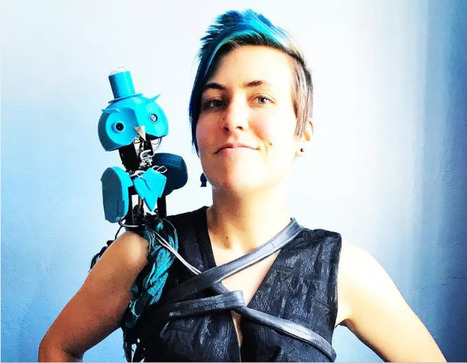


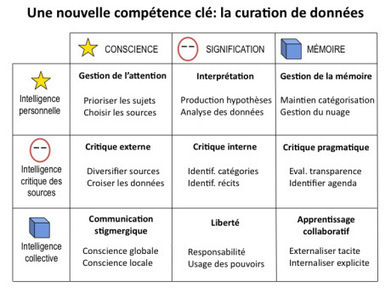
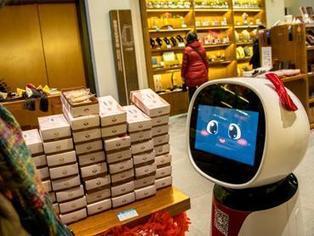

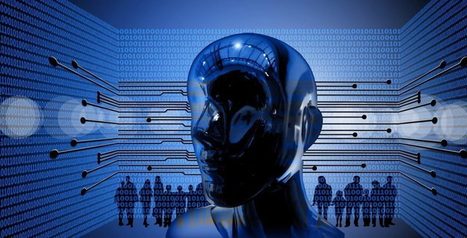


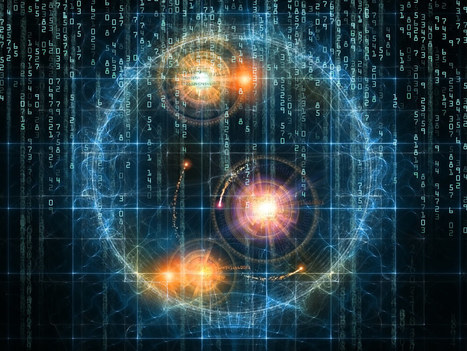

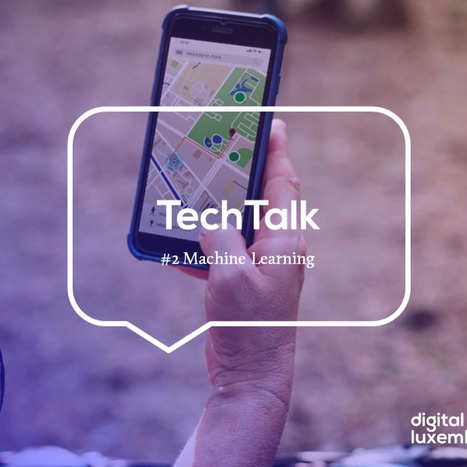

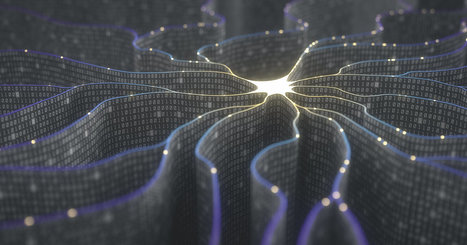





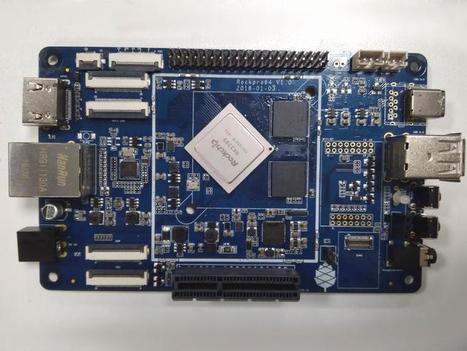

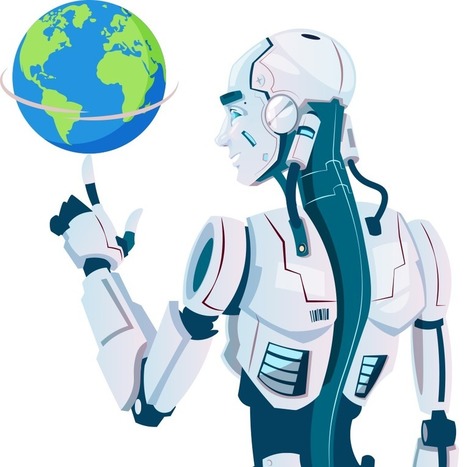
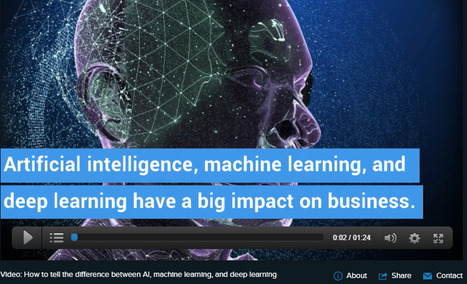





We’re proud to announce a new addition to the Arduino ecosystem, the Nicla Vision.
This is a brand new, ready-to-use, 2MP standalone camera that lets you analyze and process images on the edge for advanced machine vision and edge computing applications.
Now you can add image detection, facial recognition, automated optical inspection, vehicle plate reading, gesture recognition and more to your projects. Nicla Vision has a powerful dual processor and is packed with features that make an infinite number of applications possible in building and industrial automation, safety and security, and prototyping. Everything from business-savvy predictive maintenance (by detecting and analyzing surface wear, for example) to user-friendly smart kiosks that anyone can explore via intuitive gestures. All true to Nicla’s mission to provide a new range of easy-to-use, cost-effective and accessible tools to advanced users and enthusiasts alike.
Learn more / En savoir plus / Mehr erfahren:
https://www.scoop.it/t/21st-century-learning-and-teaching/?&tag=ARDUINO
https://www.scoop.it/t/21st-century-learning-and-teaching/?&tag=AI
https://www.scoop.it/t/21st-century-innovative-technologies-and-developments/?&tag=AI